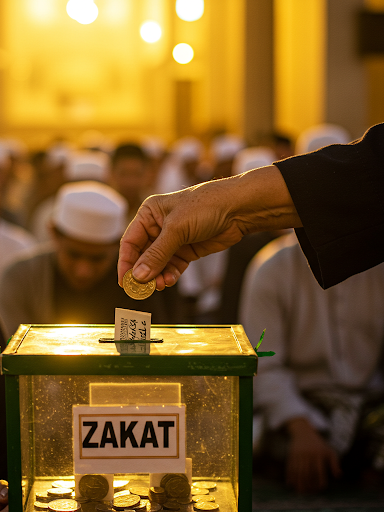Five daily prayers
| Fajr | 2 supererogatory Rak’ahs | 2 Fardh (obligatory) Rak’ahs | ||||
| Dhuhr | 4 supererogatory Rak’ahs | 4 Fardh (obligatory) Rak’ahs | 2 supererogatory Rak’ahs | 2 supererogatory Rak’ahs | ||
| Asr | 4 supererogatory Rak’ahs | 4 Fardh (obligatory) Rak’ahs | ||||
| Maghrib | 3 Fardh (obligatory) Rak’ahs | 2 supererogatory Rak’ahs | 2 supererogatory Rak’ahs | |||
| Isha | 4 supererogatory Rak’ahs | 4 Fardh (obligatory) Rak’ahs | 2 supererogatory Rak’ahs | 2 supererogatory Rak’ahs | 3 Witr Rak’ahs | 2 supererogatory Rak’ahs |
Fajr (morning) Salaat
In the last part of the night, at the approach of dawn, some whiteness can be noticed on the length of the horizon towards the east, i.e. from the direction in which the sun rises.
After a little while, whiteness can be noticed on the breadth of the horizon. This whiteness begins to spread very rapidly. After a little while, it becomes completely bright.
From the time that this broad whiteness becomes visible, the time of fajr salaat commences and remains until the rising of the sun. The moment a small portion of the sun appears, the time of fajr salaat ends.
However, it is preferable to pray it in its early time when it is still dark (This ruling is for women; as for men, the ruling is that they should offer their fajr salaat when it is slightly bright and not when it is very dark.)
Zuhr (Dhuhr) (mid-day) Salaat
On the declining or descending of the zenith, the time of zuhr salaat commences. An indication that the zenith is declining is that the shadow of long objects begins to decrease from the west towards the north. When it comes exactly to the north and begins to turn towards the east, then one should know that noon has declined.
By standing towards the east, the direction on ones left hand is the north. Another easier method of deduction is that as the sun rises, the shadow of everything begins to decrease. Once these decreasing stops, exactly at this time is mid-day or noon.
Thereafter, once the shadow begins to increase, it should be understood that noon has declined and from this time, the time of zuhr salaat has commenced.
Excluding the extent to which the shadow was at exactly mid-day, till the shadow of everything remains twice (in Shafi', Maliki and Hanbali, it is of same length, not twice) its size, the time of zuhr will remain.
For example, the shadow of a stick which is one arm in length, was equal to four fingers at mid-day. So as long as its shadow does not spread to two arm-lengths and four fingers, zuhr time will remain. Once it reaches two arm-lengths and four fingers, asr time will commence.
Asr (afternoon) Salaat
Based on the previous example, once the shadow reaches two arm-lengths and four fingers, asr time will commence. Asr time will remain until sunset.
However, it is makruh to offer asr salaat when the colour of the sun changes and the sun's rays change to yellow. If due to some reason one gets delayed, salaat in this makruh time should be offered and not allowed to be missed out. In future it should not be delayed.
Apart from this asr salaat, it is not permissible to offer any other salaat in this time. No missed salaats nor any nafl salaat can be offered.
Maghrib (evening) Salaat
Once the sun sets, maghrib time commences. Maghrib time remains as long as the redness on the western horizon remains.
However, maghrib salaat should not be delayed to the extent that many stars begin to appear in the sky. To delay it till such a time is makruh.
Isha (night) Salaat
Once the redness on the western horizon disappears, Isha (esha) time commences and remains until dawn.
However, after mid-night, Isha salaat becomes makruh and the reward is reduced. Therefore, Isha salaat should not be delayed till such a time.
It is preferable that Isha salaat be offered before one third of the night passes.





